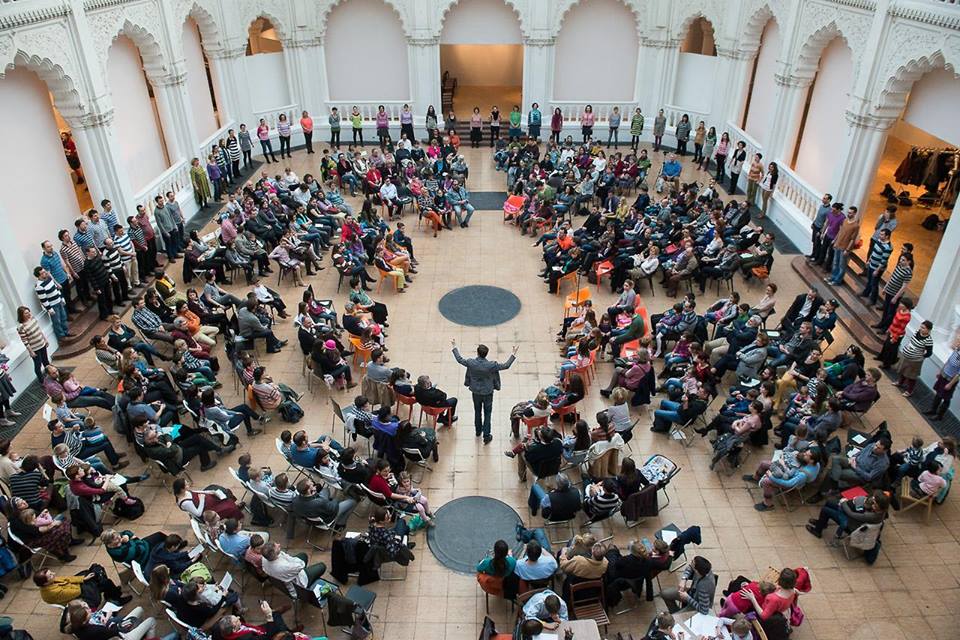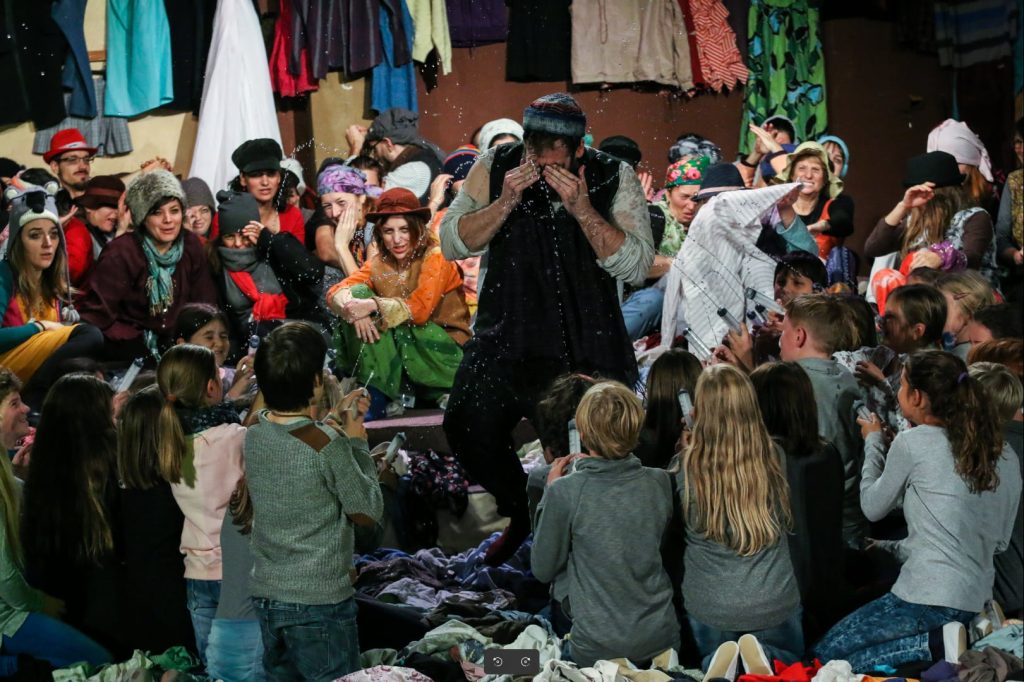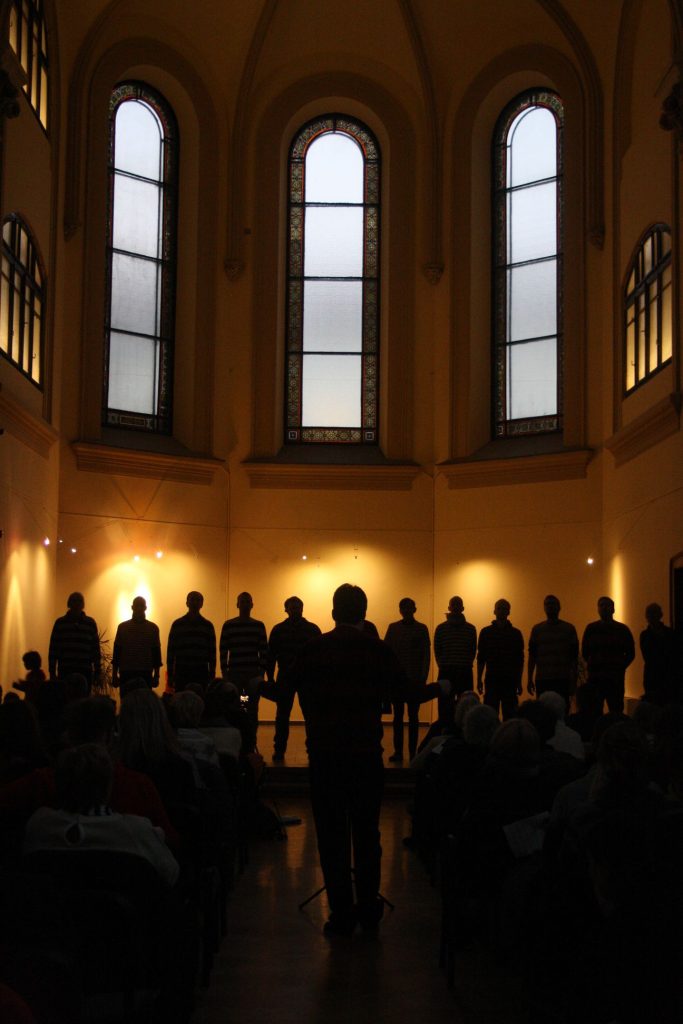Számunkra a Csíkszerda nem csak az éneklés, hanem koncertjeink, programjaink, saját fesztiváljaink szervezésének közös élményét is jelenti. Ez egy közösségi, improvizációs kórus, így a kóruséneklés szokásos kereteit kitágítva az éneklés mellett előadásaink elengedhetetlen része a hanggal való játék és a mozgás is. Különféle tradíciókhoz kötődő zenei anyagokból építkezünk, és szívesen használjuk a kórusimprovizáció eszközeit, mellyel sokszor klasszikus és kortárs szerzők műveit kötjük össze különböző kultúrák népzenéjével. A zenei műfajokon és évszázadokon átívelő koncertjeink alapélménye a szabadság közös zenei megélése.

Előzmények
Tóth Árpád és Halas Dóra a Zeneakadémia karvezetés szakos hallgatóiként együtt alapították a Halastó kórust azzal a céllal, hogy a hagyományos kórusokhoz képest valami újat és szokatlant hozzanak létre. A kórusba olyan lelkes énekeseket vártak, akik egyszerűen csak szeretnek énekelni, zenei képzettségtől függetlenül. Öt éven át vezették együtt a kórust, számos nagysikerű előadást hoztak létre. A Halastó 2009-ben kettévált, Halas Dóra Soharóza néven vitte tovább új kórusát, Tóth Árpád vezetésével pedig útjára indult a Csíkszerda.
Alakulás
A Csíkszerda név arra utal, hogy a próbák – kezdetben – szerdán voltak, és a csapat a koncerteken csíkosban lépett fel. A Halastóban lefektetett alapelvek megmaradtak: hogy énekelni mindenki tud, így nincs válogatás, felvételi, a nyitott kapu lehetőségével bárki élhet, amíg a próbaterem befogadóképessége bírja. A különleges hangzás, a szabad, örömteli éneklés élménye egyre többeket vonzott: az egyre inkább teltházas koncertek mellett a nyitott kapuk alkalmával évről évre egyre többen csatlakoztak a kórushoz is, 2013-ban és 2014-ben már száznál is többen megjelentek az évkezdéskor.
2015 nyarán annyian akartak csatlakozni, hogy belőlük (a régiek egy részével együtt) szeptemberben egy új kórus jött létre: a Csíkhétfő (a hétfőnként próbáló különítmény). Ebben az évben indult a nagykórusokból meghívott tagokkal a Csíkszerda Kamarakórus is. Ez a formáció a megszokott Csíkszerdás gyakorlattól eltérően klasszikus darabokat adott elő, kottából, kevesebb improvizációval, első hallásra-éneklésre szokatlannak tűnő, izgalmas akkordokkal.

2016-ban az újonnan érkező 150 lelkes amatőr énekes számára megalakult a Csíkcsütörtök (a csütörtökönként próbálók csoportja). Ugyanebben az évben alakult egy gyerekkórus is: a gyerekek a szerdánként próbáló kórusunk Jonathan Dove: Tóbiás és az Angyal című operaelőadásában szerepeltek. Az előadás sikerének és a gyerekek lelkesedésének eredménye egy újabb állandó kórus: a Csíkszerda Gyerekkórus lett.

Azóta minden évben kicsit átalakul a Csíkszerda Kóruscsalád felállása, már számos együttes és kísérleti projekt működik, a három nagy kórus mellett több kamara formáció volt már változó kórusvezetőkkel, akik természetesen valamelyik nagy kórus tagjai, de a gyerekkórus is tágul korosztályok szerinti csoportokkal (CsíkKids, CsíkNagyok, CsíkHolnap). Tóth Árpád munkáját a kórusok néhány tagja karnagyként is segíti, akik már önálló projekteket is irányítanak.
A kóruscsalád művészeti vezetője Tóth Árpád, Artisjus díjas karnagy, aki a Csíkszerdában önkéntesen végzett karnagyi munkája mellett a Liszt Ferenc Zeneművészeti Egyetemen Budapesten, valamint annak kecskeméti Kodály Intézetében karvezetést, zeneelméletet, tanítási módszertant, és kamarazenét, a budapesti Képző- és Iparművészeti Szakközépiskolában pedig éneket és kultúrtörténetet tanít. Rendszeres vendégelőadó európai (németországi, brit, romániai, szlovákiai) és távoli (koreai, kínai, ausztráliai, fülöp-szigeteki) egyetemeken.